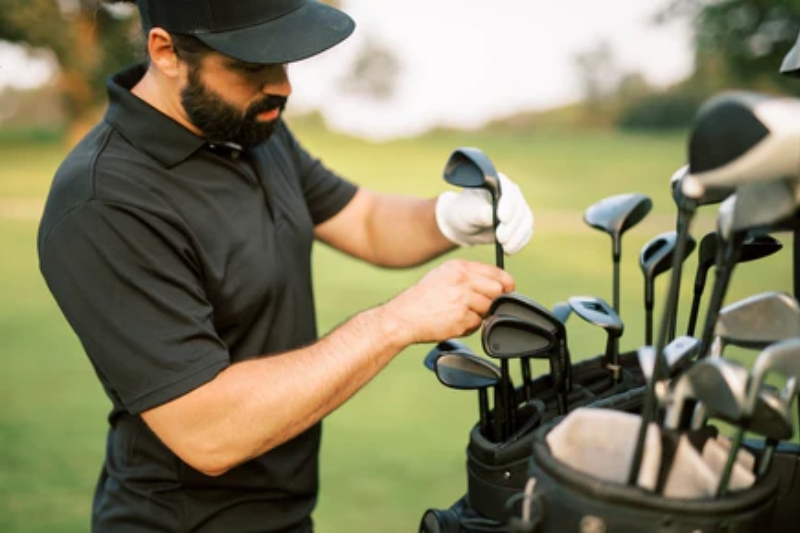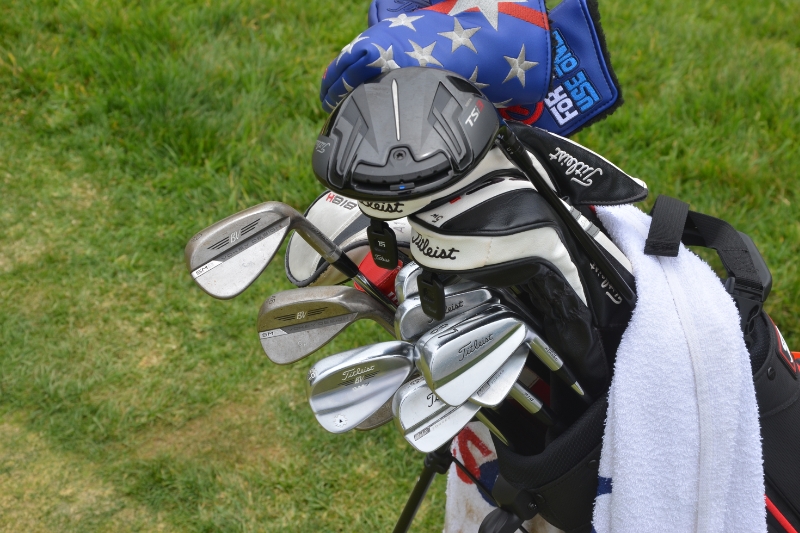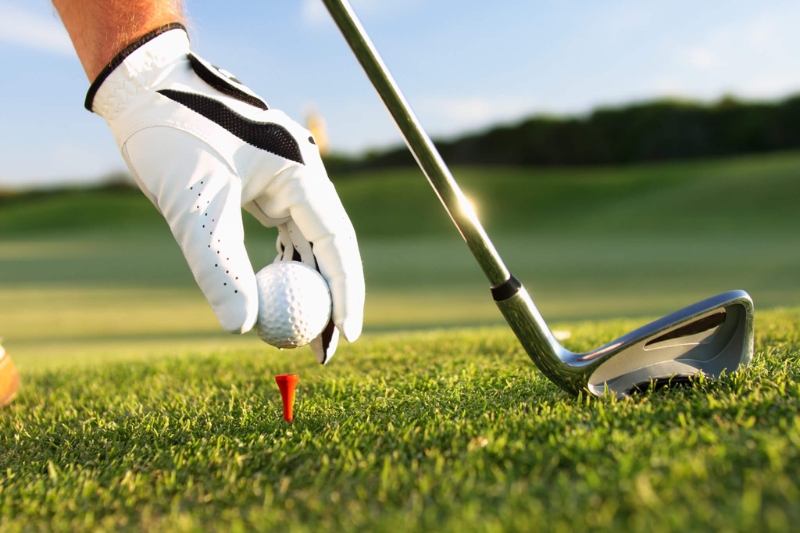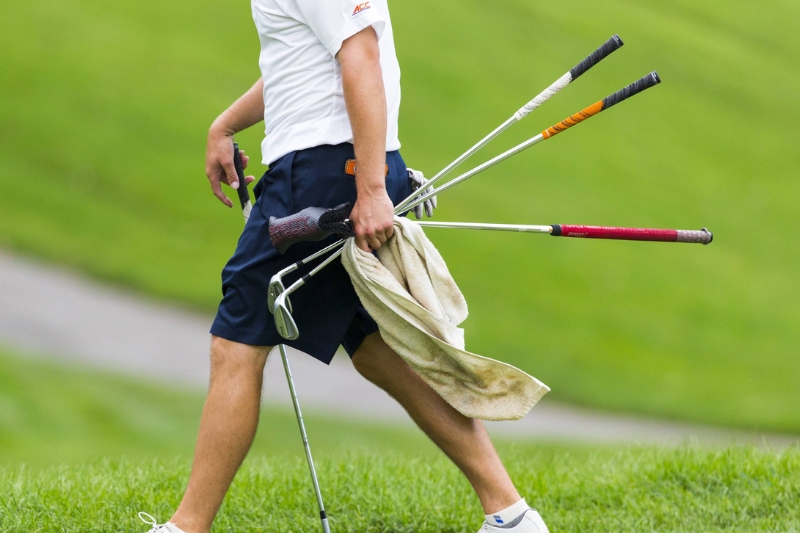Golf is not just a game; it’s an art form that requires precision, skill, and the right equipment. As any seasoned golfer knows, the quality of your golf clubs can significantly impact your performance on the course. While selecting the right clubs is essential, understanding when to replace them is equally crucial. Over time, as your skills evolve and your clubs age, their performance may decline, potentially hindering your game. This comprehensive guide aims to help you identify the signs indicating it’s time to replace your golf clubs, ensuring you get the most out of your golfing experience.
Signs it’s time to replace your golf clubs

As with any sporting equipment, golf clubs have a finite lifespan. Recognizing the signs that indicate your clubs are no longer performing at their best can save you from frustration and enhance your overall game. Here are some key indicators that it might be time for a replacement.
Visible wear and tear
The first sign that your golf clubs may need replacing is visible wear and tear. Regular use can lead to various forms of damage, including:
- Shaft Damage: Inspect the shafts for cracks or bends. A damaged shaft can drastically affect your swing and shot accuracy. If you notice any irregularities, it’s time to consider a replacement.
- Clubhead Wear: The clubhead is where the magic happens during a swing. Look for dents, scratches, or worn-out grooves. Worn grooves can reduce spin control and affect distance, making it difficult to achieve the desired shot trajectory.
- Grip Condition: Grips are often overlooked but play a vital role in your performance. If your grips feel slippery or worn down, they can hinder your ability to maintain control over your shots. Replacing grips regularly can extend the life of your clubs, but if they are excessively worn, it may be time for new clubs altogether.
Loss of performance
Another significant indicator that your clubs may need replacing is a noticeable loss of performance. Consider the following aspects:
- Reduced Distance: If you find yourself consistently hitting shorter distances than before, it could be due to worn-out clubs. Aging technology and materials can lead to decreased clubhead speed and power transfer.
- Inconsistent Accuracy: Are you struggling to hit the sweet spot? If your shots are becoming increasingly erratic, it may be a sign that your clubs are no longer suited to your playing style or have lost their effectiveness.
- Swing Difficulty: If you’re experiencing discomfort or difficulty during your swing, it could be due to worn shafts or grips. An uncomfortable club can lead to poor mechanics, further impacting your performance.
Difficulty controlling shots
Control is paramount in golf, and if you find yourself struggling to manage your shots, it may be time for new clubs. Consider these factors:
- Inability to Shape Shots: If you used to be able to shape your shots effectively but now struggle to do so, your clubs may be hindering your ability to execute specific shots. Newer clubs often feature improved technology that enhances shot shaping capabilities.
- Loss of Consistency: Inconsistency in your shots can stem from using outdated or worn clubs. If you notice that your ball flight has become unpredictable, it might be time to invest in a new set.
- Difficulty with Trajectory Control: If you find it challenging to control the height and trajectory of your shots, it could be a sign that your clubs are no longer performing optimally. Modern clubs often come equipped with features designed to help golfers achieve better trajectory control.
The club feels uncomfortable
Comfort is key when it comes to golf equipment. If your clubs feel uncomfortable, it can directly impact your performance. Pay attention to the following:
- Worn Grips: Grips that have lost their tackiness can lead to a poor connection between your hands and the club, resulting in inconsistent swings. If your grips feel slick or overly worn, it’s a clear indication that they need replacing.
- Uncomfortable Shaft Flex: If the flex of your shafts no longer suits your swing, it can lead to discomfort and poor performance. A professional fitting can help determine if your current shafts are appropriate for your swing speed and style.
- Overall Feel: If you simply don’t feel comfortable with your clubs anymore, whether due to weight, balance, or design, it may be time to explore newer options that better suit your preferences.
Average lifespan of golf clubs

Understanding the average lifespan of golf clubs can provide insight into when you should consider replacing them. While the longevity of clubs can vary based on several factors, a general guideline can help you make informed decisions.
General estimates
Most golf clubs will last between 5 to 7 years with regular use and proper maintenance. However, this estimate can fluctuate depending on various factors, including:
- Frequency of Use: Golfers who play frequently may find that their clubs wear out more quickly than those who play less often. Regular exposure to the elements and repeated impacts can accelerate wear and tear.
- Quality of Materials: Higher-quality clubs made from durable materials tend to last longer than cheaper alternatives. Investing in well-crafted clubs can pay off in the long run by extending their lifespan.
- Type of Play: Playing on rough courses or in adverse weather conditions can contribute to faster wear and tear. If you frequently play in challenging environments, your clubs may need replacing sooner.
Factors influencing lifespan
Several factors can influence how long your golf clubs last. Understanding these factors can help you gauge when it might be time for an upgrade.
- Care and Maintenance: Proper care can significantly prolong the life of your clubs. Regular cleaning, grip replacement, and storage in a protective environment can help maintain their condition.
- Playing Style: Aggressive swings and high clubhead speeds can put additional stress on clubs, leading to quicker deterioration. If you have an aggressive playing style, you may need to replace your clubs more frequently.
- Technological Advancements: The golf industry is constantly evolving, with new technologies emerging regularly. If your clubs are several years old, they may lack features that can enhance your performance, prompting you to consider an upgrade.
Factors affecting the frequency of replacing golf clubs

When determining how often to replace golf clubs, several factors come into play. By considering these factors, you can make informed decisions about your equipment.
Frequency of play
One of the most significant factors influencing how often you should replace your golf clubs is how frequently you play.
- Regular Players: If you play several times a week, your clubs will naturally experience more wear and tear. Regular exposure to the elements and repetitive impacts can lead to faster deterioration.
- Casual Players: For those who play only occasionally, clubs may last longer. However, even infrequent players should keep an eye on their equipment’s condition, especially if they notice any performance issues.
- Seasonal Players: Golfers who play primarily during certain seasons may find that their clubs remain in good condition for longer periods. However, seasonal players should still assess their clubs at the start of each season to ensure they are ready for play.
Playing conditions
The conditions in which you play can also impact the lifespan of your clubs.
- Challenging Courses: Playing on courses with rough terrain, sand traps, or water hazards can increase the wear and tear on your clubs. If you frequently encounter challenging conditions, consider upgrading your equipment more often.
- Environmental Factors: Extreme weather conditions, such as rain, humidity, or excessive heat, can affect the durability of your clubs. Storing your clubs in a controlled environment can help mitigate these effects.
- Course Maintenance: Well-maintained courses may be less taxing on your clubs compared to poorly maintained ones. If you play on courses that prioritize upkeep, your clubs may experience less wear.
Quality of clubs
The quality of your golf clubs plays a crucial role in determining how often you need to replace them.
- High-Quality Clubs: Investing in high-quality clubs made from durable materials can extend their lifespan. These clubs are often designed to withstand the rigors of regular play and can provide consistent performance over time.
- Budget Clubs: While budget-friendly options may be appealing, they often lack the durability and performance characteristics of higher-end clubs. If you opt for budget clubs, be prepared to replace them more frequently.
- Brand Reputation: Some brands are known for producing durable and reliable clubs. Researching brand reputation and customer reviews can help you make informed choices about your equipment.
Importance of replacing golf clubs regularly

Regularly replacing your golf clubs is essential for maintaining optimal performance and enhancing your enjoyment of the game. Here are several reasons why timely replacements matter.
Improved performance
One of the primary benefits of replacing your golf clubs is the potential for improved performance.
- Enhanced Technology: New clubs often feature the latest advancements in technology, such as lighter materials, larger clubheads, and improved aerodynamics. These innovations can lead to increased distance, accuracy, and consistency.
- Better Fit: As your game evolves, your equipment should adapt accordingly. Upgrading to clubs that better match your swing characteristics can lead to improved performance and lower scores.
- Optimized Playability: Newer clubs often offer enhanced playability, allowing you to execute shots more effectively. Whether it’s improved forgiveness on off-center hits or better control over trajectory, modern clubs can elevate your game.
Enhanced enjoyment
Using clubs that are in good condition can significantly enhance your overall enjoyment of the game.
- Confidence Boost: Knowing that you have reliable equipment can boost your confidence on the course. When you trust your clubs, you’re more likely to focus on your strategy and execution rather than worrying about your equipment.
- Reduced Frustration: Playing with worn-out clubs can lead to frustration and disappointment. By replacing your clubs regularly, you can minimize the chances of encountering performance-related issues that detract from your enjoyment.
- Improved Experience: Golf is meant to be enjoyable, and using clubs that perform well can enhance your overall experience. Whether you’re playing with friends or participating in tournaments, having reliable equipment can make a difference.
Reduced risk of injury
Worn-out clubs can pose a risk to your health and safety on the course.
- Uneven Swing Path: Using damaged clubs can create an uneven swing path, increasing the likelihood of injuries to your wrists, elbows, and shoulders. Replacing worn clubs can help maintain a smooth and consistent swing.
- Equipment Failure: Damaged clubs can break during a swing, posing a risk to both you and those around you. Ensuring your clubs are in good condition minimizes the chances of accidents occurring on the course.
- Long-Term Health: Investing in quality equipment and replacing worn clubs can contribute to your long-term health as a golfer. Avoiding injuries allows you to continue enjoying the sport for years to come.
How often to replace golf clubs?

While there is no one-size-fits-all answer for how often to replace golf clubs, a general guideline can help you determine the right timing for upgrades.
Three to five-year rule
A widely accepted recommendation is to upgrade your golf clubs every three to five years. This timeframe allows you to take advantage of technological advancements while ensuring your equipment remains in good condition.
- Technological Advancements: The golf industry is continuously innovating, with new designs and technologies emerging regularly. Upgrading within this timeframe allows you to benefit from improvements that can enhance your game.
- Personal Growth: As your skills develop, your equipment should reflect your progress. Upgrading your clubs every few years ensures that they align with your current playing style and abilities.
- Condition Assessment: Regularly assessing the condition of your clubs can help you determine if they need replacing sooner than expected. If you notice significant wear or performance issues, don’t hesitate to make the switch.
Individual circumstances
While the three to five-year rule serves as a helpful guideline, individual circumstances may warrant more frequent upgrades.
- Frequent Play: If you play golf multiple times a week, you may need to replace your clubs more often than someone who plays only occasionally. Assess your equipment regularly to determine if it’s time for an upgrade.
- Changing Skill Level: If you experience a significant improvement in your game, it may be worth considering an upgrade sooner. New clubs that better match your skill level can help you continue progressing.
- Specific Issues: If you encounter specific performance issues, such as reduced distance or accuracy, it may be time to replace your clubs regardless of their age. Trust your instincts and listen to your game.
Replacing your golf clubs at the right time is crucial for maintaining consistent performance and maximizing your enjoyment of the game. By understanding the signs of wear and tear, considering the factors that influence club lifespan, and seeking professional advice, you can make informed decisions about when to upgrade your equipment and keep your game at its peak. Remember, investing in quality clubs and proper maintenance can pay dividends in your game by enhancing performance and prolonging the lifespan of your equipment. Whether you choose to customize your existing clubs or invest in new ones, prioritizing your equipment will ultimately lead to a more fulfilling golfing experience.

I am the owner of Ricks Golf Shop, a popular destination for golf enthusiasts. My passion for golf began in my teenage years and has only grown over the years. With over 10 years of experience in the golf industry, I offer expert advice and quality products. With a friendly demeanor and extensive knowledge, I ensure every customer leaves happy.
